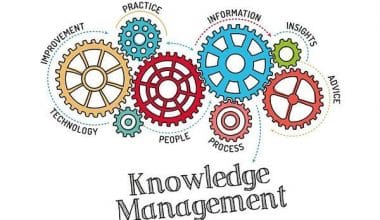In-and-Out Burger distributes free burgers to employees, and Intel provides free car washes and notary services.
Competitive employee benefits and perks programs are one of the best methods to recruit and keep exceptional employees. After money, the most essential aspect for employees when contemplating a post is solid benefits, particularly health benefits. Remote work, educational subsidies, and parental leave, which were once considered perks, are now increasingly recognized as important options for today’s changing workforce. In this post, we’ll see the best employee perks ideas and how to incorporate them in the workplace.
What Are Employee Perks?
Employee perks are benefits that are added to employee remuneration, which includes salary and benefits. Perks are not needed by law and are not considered requirements. They are crucial components of improving the employee experience since they help establish and maintain a company’s overall culture.
Employee perks can assist you in meeting those three basic demands and creating a work atmosphere that people want to be a part of.
Perks are non-wage benefits that go beyond compensation and benefits (for example, retirement accounts, health care, dental, or vision plans). They are a crucial part of your company culture and are also known as fringe benefits.
Employee perks have no direct effect on engagement. When designed effectively, however, they may help your engagement objectives by reinforcing your company’s values and culture and developing an employer brand that attracts and retains talent.
What Is the Difference Between Employee Perks and Employee Benefits?
Benefits are kinds of non-cash compensation that cover expenses that an employee would have to pay for on his or her own. Employees, on the other hand, would be able to function without perks, although they may be valuable in encouraging someone to work or stay with the organization.
What Exactly are Employee Benefits?
The U.S. Bureau of Labor Statistics defines benefits as paid leave, additional income, insurance, retirement, and legally required benefits such as Social Security. Benefits typically account for approximately 30% of overall pay, with wages and salary accounting for the remaining 70%.
Important distinctions:
Benefits are corporate expenses that are tax deductible. Some perks, such as adoption help, tuition reimbursement, onsite meals, and holiday parties, are partially tax deductible for the company. However, perks such as commuter benefits, parking stipends, pet insurance, and many others are not included. Perks are not typically included in employment contracts because they do not constitute a portion of total remuneration.
What is the Importance of Employee Perks?
There are clearly altruistic reasons for businesses to provide perks. Employee perks may make employees happy, whether it’s a flexible work schedule, parental vacation, or the occasional free lunch. Aside from generosity, perks can have a significant impact on employee experience and engagement. You can increase employee satisfaction — a key statistic for hiring and retention — by interacting with your employees and offering them tools they appreciate.
Employee perks should be only one component of your entire human capital management (HCM) strategy for better engaging employees and creating an appealing and good workplace culture. Consider how to quantify the impact of different efforts and how a perk and benefits package might impact important performance indicators, such as employee happiness, before deciding which perks are a suitable fit for you and your staff. HCM solutions can assist in the administration and tracking of employee engagement efforts, such as perks programs.
Employee surveys conducted before and after the implementation of a program can give useful data to help gauge efficacy, and HCM platforms can assist in administering and analyzing the results.
Benefits of Employee Perks
Employee perks boost employees’ quality of life while enticing them to join or stay with your organization.
- Perks help to strengthen and reinforce the company culture. They communicate messages about the company culture. Offering tuition reimbursement, for example, demonstrates that your organization places a high emphasis on ongoing education.
- Perks aid in the recruitment of outstanding employees. The benefits and perks of remote and flexible work are similar. One-third of job applicants said they would decline an offer if it did not include the option to work remotely.
- They contribute to lower healthcare expenses. Health insurance costs have been a primary worry for small businesses for decades, and they continue to grow. However, well-designed health programs with wellness perks can save expenses in absenteeism, workers’ compensation, and disability.
- Some perks may be deductible on your tax return. Tuition reimbursement, adoption help, on-site employee lunches, and other company expenditures are all fully or partially tax-deductible.
- Changes to the Fair Labor Standards Act at the start of 2020 make it much simpler to grant perks. Many perks, like wellness plans, mobile phone reimbursements, and parking benefits, are no longer considered part of an employee’s income and hence are not taxed.
How to Select the Best Employee Benefits and Perks
With so many alternatives, how do you pick the best ideas for employee perks and incentives? Following these three steps may be beneficial:
- Define the role or purpose of the perk or incentive.
- Consider the price.
- Consider the influence on individual employees as well as your company.
Employee perks and benefits might include one-time activities (such as having an artist teach a group painting lesson), recurring events (such as employee-of-the-month celebrations), or ongoing features (such as maintaining a pantry stocked with snacks).
Having a combination of these three, and occasionally adding new ones, will help keep your employee perks programs enticing and fresh.
Top 45 Employee Perks Ideas
Some of the best employee perks ideas may only appeal to a subset of your employees—and that’s fine. It is impossible to come up with ideas that would appeal to every single employee. The idea is to provide a diverse selection with something for everyone.
You’re well on your way if you’ve already implemented some outstanding ideas for employee perks and incentives. However, if you’re just getting started or want to add something new to your program, you’ve come to the correct place. Our top employee perks ideas and programs are listed below.
Wellness and Health
Work-related stress costs American businesses $30 billion in lost productivity due to sick days and absenteeism each year. Encourage your employees’ well-being by providing health and wellness programs and workplace perks.
- Options for healthy vending machines or cafeterias
- Reimbursement for gym membership
- Required breaks (extra points for nap rooms, tea stations, and so on).
- Yoga, meditation, and walking groups are examples of wellness activities.
- Standing (or convertible) desks
- Ergonomic office gear (such as chairs and keyboards)
- Free health trackers (for example, FitBit)
- Free nutritious snacks
- Flu vaccination clinic on-site
- Fun runs for the company (5K/10K/marathon)
- Collaborate with nutritionists to sponsor nutrition initiatives and workshops.
- Incentives for wellness program participation
Family
Family-oriented perks are an excellent method to attract and retain younger staff. According to the SHRM 2019 Employee Benefits Survey, one out of every five employers reported providing paid or unpaid family leave above and above what the federal Family and Medical Leave Act and state regulations require.
In other words, as family perks become more important to young employees, businesses have a fantastic opportunity to differentiate themselves from the competition.
- Paid parental leave
- Paid maternity leave beyond 8 weeks
- Dedicated nursing mother’s rooms
- Pet insurance.
- Work from home or remote possibilities
- 18. Flexible hours
- On-site childcare
- Welcome Back Package for New Parents
- Employee and their families picnic at the company
- Scholarship or savings program for college
- Employees and their families receive free admission to a park or museum.
Community
More than half of the 1,514 millennials working in the United States indicated a company’s humanitarian activities influenced their decision to accept a job offer. This new generation of employees values firms that give back and empower their employees to make a difference.
Show your concern for the community by providing community-focused perks such as:
- Volunteering time off
- Company service days
- Matching charitable contributions
- Charity events sponsored by the company
Remember that if you want to establish an employer brand based on community impact and social responsibility, your perks should be simply one part of your broader goal and strategy. If the remainder of your company’s policies and activities do not line with your stated beliefs and perks, the message will fall flat, and you will lose credibility.
Workplace Environment
Your office setting can make or break an employee’s work experience. If your workplace environment and culture are unwelcoming, noisy, rigid, or un-inclusive, employees will be less likely to be glad to be there—regardless of how much they enjoy their work.
Including environmental perks might help establish the culture and working atmosphere you want.
- Informal dress code
- Changing office art
- Recreational areas
- Corporate retreats
- Bring your pet to work on certain days.
- Snow days
- Unrestricted PTO
- Employee of the month parking slot
- Happy hours
Employee Training
According to Gallup, 87% of millennials (the largest generational group of employees today) prioritize professional development and career growth when choosing a job offer. Furthermore, 68% of millennials who believe they have had opportunities to learn and improve at work in the last year intend to stay with their firm for at least another year.
Employee development perks can assist you fund your development programs while also attracting talent in a competitive market.
37. Mentoring program
38. Sabbaticals that are paid
- Reimbursement for tuition
- Workplace library
- Lunch and Learns
- Certification and employee development stipends
- Paid professional organization memberships
- Professional recognition occasions
- Sponsored attendance at industry conferences
How to Determine Whether Your Employee Benefits and Perks Are Effective
While benefits and perks may appear attractive on paper, it can be difficult to determine whether your employee’s value or even use them. Always examine your employees’ demands before and after you start offering a new benefit or perk with a survey or by running the data for the best ROI. Here are some questions for you and your workers to consider:
- Do employees know about this benefit or perk?
- Are employees long-term beneficiaries of this benefit or perk? (Did employees use perks once and then never use them again, or is it a regular part of their lives?)
- What are their thoughts on the perk in general?
- Would they choose a new benefit or perk over an existing one?
You must allow time for company benefits and perks to be implemented. Are you giving your benefits and perks a fair chance by ensuring that your employees understand where to locate them and how to use them? Are you utilizing the appropriate benefits administration software?
Communication is essential for your staff to take benefit from the services you pay for.
Using pulse surveys to check in on your employees and how they feel about your current menu of perks and benefits is a terrific method to get comments.
Conclusion
Employee benefits and perks are an essential component of the employee experience. It takes time and experimentation to get the ideal combination, but the benefits are enormous.
Remember that your employees’ demands and desires will change over time. As your firm expands and your employees progress through life stages, they may require various services from you. To stay ahead of the curve, ask your employees about their preferred benefits and perks, and keep an eye out for new methods to reward and engage your team.
- COMPENSATION PACKAGE: Overview, Examples, and Best 2023 Practice
- How Many Hours Is Part-Time Work: Benefits and Job Options
- EMPLOYEE WELLNESS PROGRAMS: Best Ideas, Activities, Programs & Benefits
- EMPLOYEES WELLNESS: Best Ideas and Programs
- WELLNESS PROGRAMS: Top Programs to Develop and Retain Staff






